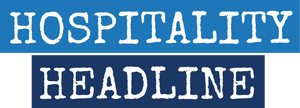How I love a new tool. We've been super busy on the consulting solutions team and we've expanded team members. That's great for us, consulting clients and the mission of helping to lift the industry. But growth comes at a cost and the team has been focused on scaling. We've been evaluating tools for project management including Wrike, Monday and Clickup. With all this evaluation it raised the question in my mind, we can get a tool to manage activity but do the tools really help us with productivity. Here are the thoughts...
The distinction between being busy and being productive is often blurred. Many organizations equate activity with productivity, measuring employees' worth by the number of tasks they complete, emails they send, meetings they attend, and calls they make. This relentless pursuit of activity often results in what is commonly referred to as "busy work" — tasks that keep employees occupied without necessarily contributing to meaningful outcomes.
I've seen this in larger sales organizations. AMP – activities lead to meetings and meetings lead to pipeline. Yeah... maybe.
Activity Versus Efficiency
The fundamental flaw in equating activity with productivity is the assumption that more input necessarily leads to more output. This is a misconception; not all tasks are created equal, and sheer volume does not guarantee quality or value. Activity, in many cases, is merely motion without progress, filling time without advancing goals.
Efficiency, on the other hand, is about achieving maximum productivity with minimum wasted effort or expense. It involves prioritizing tasks that align with the strategic objectives of the company and building systems that scale. These systems are not confined to software or technology; they can also include procedural methodologies or frameworks that enhance the productivity of individual employees or teams.
Building Systems for Efficiency
To foster true efficiency, organizations should encourage employees to consistently ask themselves several critical questions:
- Am I focusing on the most important tasks? Prioritization ensures that effort is directed towards activities with the highest impact.
- Am I holding up others by not addressing certain tasks? Understanding interdependencies within the team can help streamline processes and prevent bottlenecks.
- Am I performing repetitive tasks that can be streamlined or automated? Identifying repetitive tasks is the first step towards automation or delegation, which can free up time for more strategic work.
- Do my activities align with the mission, direction, and goals of my company and team? Alignment with organizational goals ensures that every task contributes to broader business objectives.
- How much time is spent aligning activities with their return on investment? Measuring the effectiveness of activities in terms of their return on investment can highlight areas where effort is wasted.
Measuring Contributions
A key aspect of efficiency is the ability to measure and understand how individual contributions advance the business. This requires a shift from tracking mere activity to assessing impact. Organizations must develop metrics that reflect the true value added by each employee's work, focusing on outcomes rather than outputs.
Here are 5 recommendations for boosting productivity:
Prioritize Strategically: Focus on tasks that offer the highest value and align closely with the company's goals. Use prioritization tools or techniques like the Eisenhower Box to differentiate between urgent and important tasks.
Streamline Processes: Identify repetitive tasks and explore opportunities for automation or simplification. Implement tools or processes that reduce redundancy and time wastage.
Enhance Communication: Optimize communication channels to ensure that information flows efficiently between team members. Employ concise reporting and effective meeting protocols to avoid information overload and miscommunication.
Measure Impact, Not Activity: Develop metrics that assess the impact of work on business outcomes rather than merely counting tasks. Use these insights to adjust workflows and prioritize high-impact activities.
Align Activities with Goals: Regularly review and align individual tasks with broader company objectives. Encourage employees to self-evaluate their work in the context of the organization's mission and goals, adjusting their focus as necessary.

